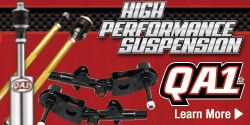To tack onto
@Scody21's post:
You will drive modern cars. Modern cars are different. At this point, they are all computerized, and they all have some sort of traction control, or at least ABS.
Older cars are not like this. They do not think for themselves. They follow the laws of physics, and do what you tell them to, so long as it doesn't conflict with the former.
You need to gain an understanding of traction, and how it changes with conditions, such as water, snow, ice, different surface types (asphalt, concrete, etc), and so on.
You need to understand the basic concepts of understeer and oversteer. An older American car will understeer badly, and, depending on conditions (such as wet roads), may suddenly convert to oversteer. You need to know what these are, and have the physics they describe operating in your brain as you drive, because the car does not have a computer that is doing that for you.
You need to understand what is "just enough" and what is "too much" for your particular car in its current state, and avoid doing things that bring out the latter.
You need to understand that an older American car will be light in the rear, and will be easy to provoke to "step out" (have the rear go sideways) with the application of too much power. This is the main place where the safety difference between a Slant-Six and a 360 will come in.
Ultimately, you need to understand and follow famous racer Stirling Moss's quote,
"It is better to go into a turn slow, and come out fast, than to go into a turn fast, and come out dead."
A whole lot of kids used to die behind the wheel when we were all younger, It happens less now, and a lot of that is because cars are safer. You need to be aware that you can't screw around like you can in a modern car.
Good luck and enjoy it!
- Eric


















